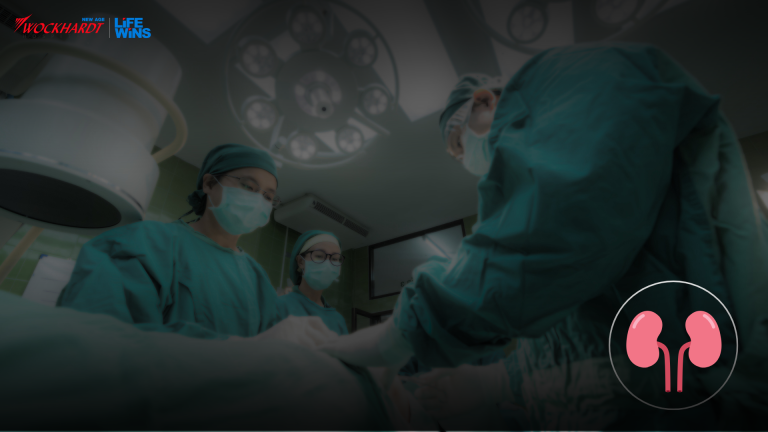Sudden weight loss: 10 reasons you are shedding too much weight unexpectedly

When you are on a weight loss journey, the shedding of every inch and kilo must be celebrated as it comes with a lot of effort. But if you are losing weight unintentionally and without any effort along with experiencing a series of worrisome symptoms, you must investigate the reasons behind it as it could indicate a disease that may be ruining your physical or mental health. According to the Mayo Clinic, losing more than 5% of weight in the span of 6-12 months without doing any exercise or following a diet especially should be a cause of concern and may indicate a problem. Experts say unintentional weight loss is something that happens when you lose weight without changing your diet or exercise routine and could indicate stress or a serious disease. “While typical weight loss is due to a change in lifestyle habits, decreased caloric intake, or an increase in physical activity but unexplained weight loss, or losing weight without trying, can be a cause for concern. It might indicate an underlying medical or disease. That is why one should take unexplained weight loss seriously,” says Deepti Khatuja, Head – clinical Nutritionist, Fortis memorial research Institute, Gurgaon. “Many a time, a patient is brought into the hospital with a symptom of weight loss, which appears to be of great concern to the patient or his or her accompanying relatives. Unintentional weight loss is when you lose weight without changing your diet or exercise routine. It can be a sign of stress or a serious illness. Weight loss can occur in patients with normal appetites or decreased appetites. When to see a doctor A good rule of thumb is to see your doctor if you have lost a significant amount—more than 5 percent of your weight—within 6 to 12 months. There are numerous medical conditions that cause sudden, unexplained weight loss,” says Dr. Hyacinth Peninnah Paljor. Common reasons for unexpected weight loss Some of the common reasons for unintentional weight loss are: 1. Diabetes: One of the major causes of unwanted weight loss is Type 1 diabetes (juvenile diabetes) although can may happen in Type 2 also. If you have Type 1 diabetes, your immune system attacks cells in your pancreas that make insulin. Without insulin, your body can’t use glucose for energy. This results in high blood glucose. Our kidneys remove unused glucose through urine. As sugar leaves your body, so do calories, says Deepti Khatuja. “Symptoms associated are frequent urination, dehydration, fatigue, blurry vision, excessive thirst, excessive hunger. Treatment of type 1 diabetes mellitus includes insulin, blood sugar monitoring, diet, and exercise,” says Dr. Paljor. 2. Cancer: Cancer is a disease that causes abnormal cells to quickly divide and spread. According to the American Cancer Society, one of the first signs may be unexplained weight loss of 10 pounds or more. “This is common with cancers of the pancreas, lung, stomach, and esophagus. Cancer increases inflammation. This promotes muscle wasting and disrupts appetite-regulating hormones. A growing tumor may also increase your resting energy expenditure (REE), or how much energy your body burns at rest. Cancer cachexia is a wasting syndrome that is linked to many cancers. It’s most common in gastric and pancreatic cancers, as well as some lung, head and neck, and colorectal cancers in their later stages,” says Khatuja. “Early symptoms may be fever, fatigue bleeding from any site, changes in moles, lump in the breast, hoarseness of voice or there may be no symptoms other than weight loss. Treatment depends on the type of cancer. It may include surgery, radiation therapy, chemotherapy, and immunotherapy,” says Dr Paljor. 3. Tuberculosis: Another cause of unexplained weight loss is tuberculosis (TB), a contagious condition that usually affects the lungs, says Khatuja. “It’s caused by Mycobacterium tuberculosis bacteria. Weight loss and decreased appetite are some of the common symptoms of TB. Although TB can be at different organs of the body like abdominal TB etc and unexpected weight loss is quite common,” adds the Fortis expert. TB is life-threatening and requires timely intervention. One is detected with TB while having symptoms such as constant cough, chest pain, and even unintentional weight loss. So, don’t forget to take charge of your health, says Dr. Aniket Mule, consultant internal medicine, Wockhardt Hospitals, Mira Road. 4. Hyperthyroidism: “As the thyroid oversees your metabolism, it’s understandable that thyroid problems could lead to weight gain. While having a fast metabolism can help you lose weight, having one that is too fast can be harmful. Rapid weight loss and sometimes additional complications, such as a raised heart rate, more anxiety, jitters, tremors, or insomnia, are all symptoms of an overactive thyroid (hyperthyroidism),” says Khatuja. “When the thyroid gland starts releasing an excess of its hormones which can be due to either its hyperfunctioning state or thyroid gland damage due to infections or antibodies. Diagnosed by a simple thyroid function test,” says Dr. Johann Varghese. 5. Gut diseases: Weight loss is caused by conditions such as celiac disease, Crohn’s disease, lactose intolerance, and intestinal damage, which can cause malabsorption. Malabsorption occurs when something prevents your gut from absorbing essential nutrients. In most cases, such as celiac disease, the gut disease can be easily treated with a gluten-free diet and healthy weight gain can be promoted, says Khatuja. “IBD also disrupts ghrelin, the hunger hormone, and leptin, the satiety hormone. This results in decreased appetite and weight loss. Additional symptoms include diarrhea, abdominal pain, bloating, bloody stools, and fatigue. Treatment consists of nutritional support, medication, and, in some cases, surgery,” says Dr Paljor. 6. Depression: “Depression is defined as feeling sad, lost, or empty for at least two weeks. These emotions interfere with daily activities such as going to work or school. Depression affects the same part of the brain that controls appetite, so this can lead to a loss of appetite and weight loss. Other symptoms include constant sadness, loss of interest in hobbies, low energy, poor concentration, sleeping too little or too much, thoughts of death or suicide, and irritability. Behavioral
10 Cm Cervical Fibroid Weighing One-And-Half Kg Successfully Removed from A 48-Year-Old Woman
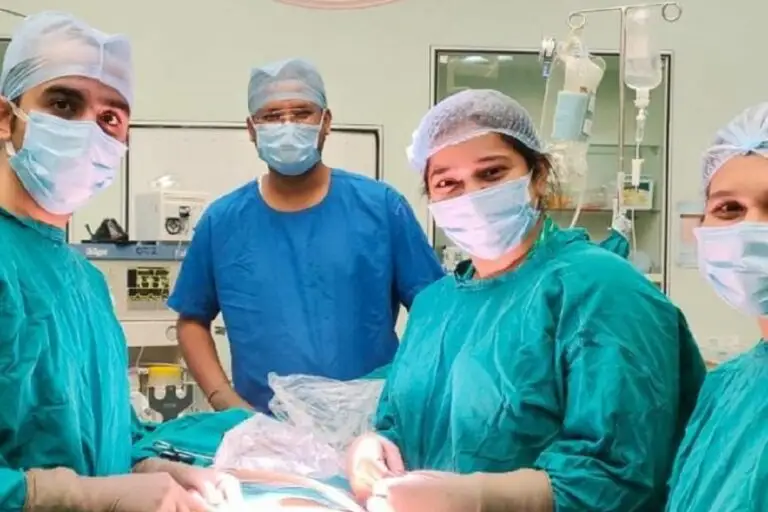
A team led by Dr. Rajashri Tayshete Bhasale, Consultant Gynaecologist, Laparoscopic Surgeon & Obstetrician, Wockhardt Hospitals, Mira Road successfully removed a 10 cm cervical fibroid weighing one-and-half kgs through a laparoscopic hysterectomy. The 48-year-old resident of Boisar, Palghar district, Maharashtra a mother of two. She underwent tubal surgery and 2 LCSC surgeries for deliveries. Post her deliveries, she complained of intense abdominal pain and menorrhagia or abnormally heavy bleeding during menstruation for the last 8 months. She consulted local doctors but due to high risk in view of multiple previous surgeries, the patient was referred to Wockhardt Hospitals in Mira Road wherein she got that much-needed relief from the pain. Dr. Rajashri Tayshete Bhasale Consultant Gynaecologist, Laparoscopic Surgeon & Obstetrician, Wockhardt Hospitals, Mira Road said, “She presented with excessive bleeding and pain. Her examination & Investigations confirmed it is a Cervical fibroid. Cervical Fibroids are less common. Less than 1 percent of women encounter this problem. They need skillful surgery as they are in close proximity to the ureter (pipe draining urine from the kidney to the bladder). She also had anemia. The fibroid was pressing her ureters (urine pipe) and affecting her kidneys. After receiving a blood transfusion, she was scheduled to undergo a laparoscopic hysterectomy.” Dr. Tayshete added, “During the procedure, 3 ports were used with a 5mm camera that we call minimal ports in minimal access surgery. Where there are fewer ports used than the regular 5 ports for laparoscopic surgeries. It was a scarless surgery. Approaching the cervix and cervical fibroid was a big challenge as there were dense adhesions in the pelvis due to her previous surgeries. Also, the uterine artery was stretched over the fibroid and there was no separate demarcation for the fibroid from the cervix. After due adhesiolysis fibroid was approached posteriorly and surgery was successfully done. A cervical fibroid of 10 cm weighing one and a half kg was removed from the vagina. The surgery went on well. The patient went home within 48hrs of surgery. “ The routine gynecological examination is important for women after 20 to tackle any abnormal gynecological problems as this condition causes abnormal menses, infertility, or abortion even if the woman conceives. “That intense abdominal pain and blood flow during menses stole my peace of mind. I tried many home remedies such as placing a hot water bag on my stomach, sipping hot beverages, exercising, sitting in an erect position, having ginger tea, and even drinking plenty of water. But all these things failed to help me get rid of the pain. I continued to suffer in silence for almost 8 months. I would get stressed and anxious due to that constant blood flow during menses. I didn’t know what to do and kept it to myself. Finally, the pain was unbearable and I was shocked to know about the cervical fibroid. I thank the doctors for treating me promptly and removing the fibroid. I am pain-free now and can do my daily activities with ease. I urge other women not to ignore any abnormal changes in the body and seek immediate medical attention,” concluded patient Ms. Akshara Shah Dr. Rajashri Tayshete BhasaleConsultant Gynaecologist, Laparoscopic Surgeon & ObstetricianWockhardt Hospitals, Mira Road To book an appointment call: +918108101104 Source: https://www.apnnews.com/10-cm-cervical-fibroid-weighing-one-and-half-kg-successfully-removed-from-a-48-year-old-woman/
Why You Should Worry About Measles
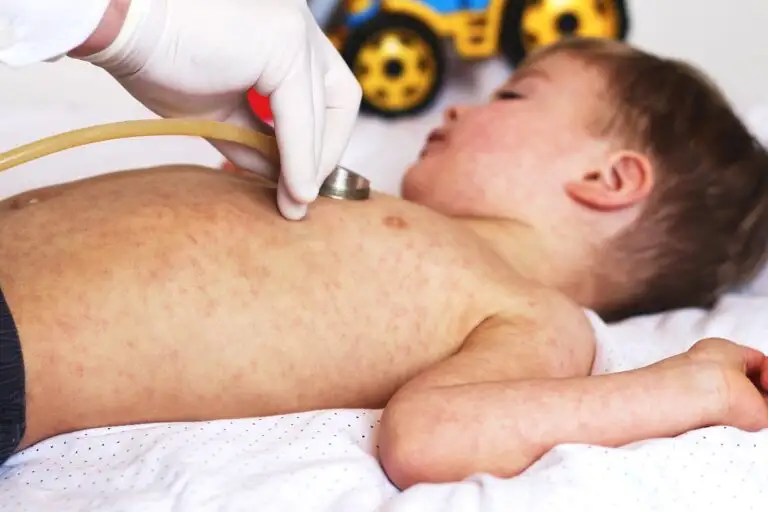
Measles is a childhood infection caused by a virus. It generally affects younger & unvaccinated kids. Once quite common, but now measles can be prevented with a vaccine. Also called rubeola, measles spreads fast and can be serious and even deadly for small children. While casualty rates have been falling internationally as more children receive the measles vaccine. Still, from time to time, there are small pockets of epidemic occurrence throughout India mostly because of poor vaccination schedule adherence by parents. The current ones are in Mumbai & Maharashtra. Measles signs and symptoms occur around 10 to 14 days after exposure to the virus. It circulates via respiratory droplets & close contact. Signs and symptoms of measles generally include: Small white areas with bluish-white centers on a red background are based inside the inner lining of the cheek — also called Koplik’s spots A skin rash is large, flat patches that frequently run into one another The infection occurs in stages over 2 to 3 weeks. Infection and incubation. For the first 10 to 14 days after infection, the measles virus spreads in the body. There are no signs or symptoms of measles during this time. Nonspecific signs and symptoms. Measles typically begins with a mild to moderate fever, often with a persistent cough, a runny nose, inflamed eyes (conjunctivitis), and a sore throat. This relatively mild illness may last 2 to 3 days. Acute illness and rash. The rash is made up of small red spots, some of which are slightly raised. Spots and bumps in tight clusters give the skin a blotchy red appearance. The rash starts from behind the ears & spreads to the whole body. Over the next few days, the rash spreads down the arms, chest, and back, then over the thighs, lower legs, and feet. At the same time, the fever rises sharply, often as high as 104 to 105.8 F (40 to 41 C). Treatment is mainly symptomatic while actively looking for complications like pneumonia, ear infections, or other possible secondary bacterial infection. The focus should be on maintaining hydration & energy levels by offering lots of liquid & healthy food. The rash may last about seven days. The rash gradually fades from the face and from the thighs and feet. As other symptoms of the illness go away, the cough and darkening or peeling of the skin where the rash was may stay for about 10 days. A child can spread the virus to others for about eight days, starting four days before the rash appears and ending when the inflammation has been present for four days. Review your child’s vaccination records with your Pediatrician, especially before your children start daycare, school, or college. According to the IAP recommendation, a child should complete 3 doses of the MMR vaccine at the age of 9 months, 15 months & 5 years. If your child gets contact with measles or develops symptoms contact to Pediatrician urgently & keep the child quarantined for at least 7 days. Dr Vishal ParmarConsultant PaediatricianWockhardt Hospitals, Mira Road To book an appointment call: +918108101104
Successfully Discharged Premature Twin Boys born at 25 Weeks of Gestation

A team headed by Dr Nitu Mundhra, Consultant Neonatologist, Paediatrician and Lactation Expert, Wockhardt Hospitals, Mira Road gave a new lease of life to premature twins born at 25 weeks of gestation. The twins having various complications related to prematurity were discharged after 3months from the NICU. Now, the twins are neurologically normal, are on Breastfeeding and growing well. Mr Mathew works in NGO by profession & Mrs Mathew, a homemaker resident of Mira Road had a difficult conception and was finally conceived after failed conception. They were overjoyed due to the first pregnancy. But their happiness was short-lived as the mothers’ water broke suddenly and the babies were prematurely born. Dr Nitu Mundhra, Consultant Neonatologist paediatrician, and Lactation expert, Wockhardt Hospitals in Mira Road said, “Two babies were born at 25 weeks of gestation that is 6 months. After an IVF conception through normal delivery. The mother had preterm labour and on June 1 when the couple arrived, we planned to conserve it but the mother progressed into labour in the middle of 1.30 am at night. The twins were delivered with utmost precautions by our ob-gyn team and taken to the Neonatal Intensive Care Unit (NICU). The babies arrived before 15 weeks and needed a longer NICU stay. Both the babies were AROUND 800 gm and started with a CPAP machine and needed short intubation and ventilation. For their overall growth and development, the babies were kept in an incubator to protect them from excessive cold. We took strict measures to keep infections at bay and provided nutrition. We supported their lung, and gut health by trying to stimulate a maternal environment. The second twin discharged early had suffered issues related to prematurity like the long requirement of oxygen. He was discharged on day 97 without any eye or hearing or neurological problems. Now, twin 2 weighs 3.6 kgs and is doing well.” Dr Mundhra added, “Twin 1 was doing well initially. But, after a month he developed a complication CALLED Necrotizing enterocolitis (NEC), a condition that is seen due to an injury or damage to the intestinal tract, causing the death of intestinal tissue. The baby had feed intolerance and abdomen swelling. But this baby too was a fighter. Later, the baby had some feeding issues. Because of it, he was discharged on day 135 of life. On follow-up, both babies were breastfeeding. Despite being in the NICU for 3 more than 3 months, the babies were taken good care of. The parents also practised kangaroo care and participated actively in taking care of their babies. Both babies are achieving developmental milestones of their age. Would like to appreciate the parents of the babies who remained calm and composed and showed faith in our team.” “Initially, we were worried about the management of our babies. But our babies were monitored closely and the entire team of doctors took good care of them despite having complications. We were taught about Kangaroo care and the right kind of nutrition for the baby. All the developments related to health were closely managed by the NICU team. We thank the doctor for saving the lives of our babies,” said Mr Mathew, father of the babies. Dr Nitu MundhraConsultant NeonatologistWockhardt Hospitals, Mira Road To book an appointment call: +918108101104 Source: https://globalprimenews.com/2022/11/24/wockhardt-hospitals-mira-road-successfully-discharged-premature-twin-boys-born-at-25-weeks-of-gestation/
Life Wins of National Level Boxer

A 28-year-old National Level boxer named Ms. Meghna Kate was admitted to Wockhardt Hospitals with severe pain and stiffness in the left wrist after she punched the wall in a fit of anger 3 months ago. The MRI revealed a locked volar dislocation of the ulna at the distal radio-ulnar joint. For 3 months patient managed the pain through painkillers, physiotherapy, and plaster at a local hospital. During this period the patient was unable to carry out her daily activities like opening the door, washing clothes, and face, utensils, and cooking. Being a mother, she was unable to take care of her child and his day-to-day activities. The patient had visited several hospitals before coming to Wockhardt Hospitals, Mumbai Central. Speaking to Dr. Mohit Kukreja, Consultant Orthopedic surgeon, Sports Medicine & Arthroscopy Specialist, Wockhardt Hospitals in Mumbai said, ‘Mrs. Kate, a professional boxer came to me with a rare wrist injury. She had a locked dislocation of her left wrist which was 3 months old with complete rotational restriction of the left wrist and significant pain. We discussed the need to address this at the earliest and decided to move forward with the surgery. With a minimally invasive approach, we did an osteotomy close to the damaged joint new joint and she was able to achieve a complete wrist range of motion on Day 1 postoperatively. Now, our goal for her is to do exercises, followed by strengthening, and then hopefully, return to boxing in 4-6 months. On the same, Dr. Prashant Kamble, Hand and Wrist surgeon, Wockhardt Hospitals, Mumbai Central said, “It was a procedure where the dislocated part is kept stable with ligaments and osteotomy (a small portion of bone is cut) was done. Post-surgery immediately after 8 hours, she was able to make movements of her wrist and forearm, which were locked for 3 months. Currently, the patient is undergoing physiotherapy and progressing well”. Ms. Meghana Kate said, “I was extremely worried thinking, being a boxer, I couldn’t move my wrist at all. I was not even able to do my normal activities. Even my 2.5-year-old baby was dependent on me, and I couldn’t even do his daily chores due to injury. For three months we kept switching to several doctors but there was no positive outcome or relief of the pain. One of our relatives gave us the reference of Dr. Mohit Kukreja after meeting him things were cleared about the injury and we decided to opt for the surgery. On the day of the surgery itself, I was able to move my wrist and 90% of my pain was gone. I am looking forward to getting completely recovered soon and getting back to boxing”. Dr. Mohit KukrejaConsultant Orthopedic Surgeon, Sport Medicine & Arthroscopy SpecialistWockhardt Hospitals, Mumbai Central To book an appointment call: 022-61784444 Source: https://globalprimenews.com/2022/11/22/life-wins-of-national-level-boxer-at-wockhardt-hospital-2/
Pressure Ulcers (Bed Sore) Kills Patients
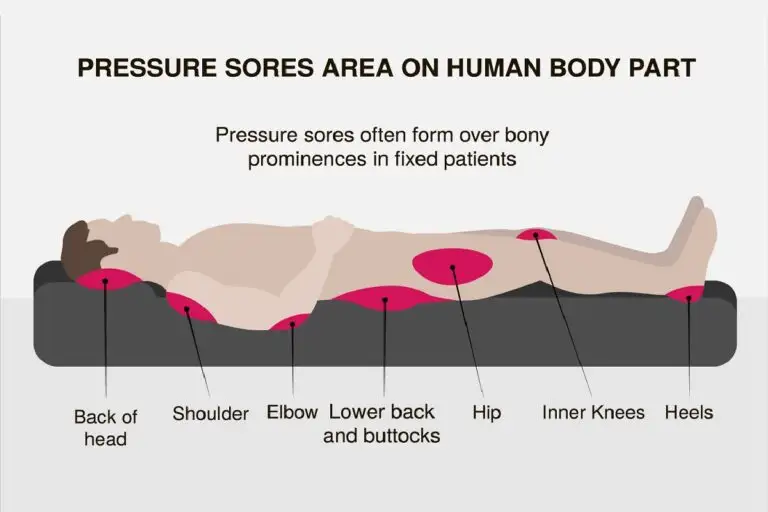
Bedsores also called pressure ulcers and decubitus ulcers are injuries to the skin and underlying tissue resulting from prolonged pressure on the skin. If the patient is immobile due to paralysis, Fracture Poly trauma also patients who are on venti support and sedation are prone to bed soreness. Wockhardt Hospitals, Nagpur are taking a step to raise awareness in this direction. Bedsores most often develop on skin that covers bony areas of the body, such as the heels, ankles, hips, and tailbone. Dr. Nirmal Jaiswal, Senior Consultant- Internal and Critical Care Medicine Jaiswal says that proper skin care using medicated lotions with high-end air beds with skin movements helps in less incidence of bed soreness. In Europe 3rd Thursday of Nov every year is celebrated as a stop pressure ulcer (Bed Sore) day We are taking inspiration from EPUAP and implementing this at Wockhardt Hospitals with Badges and awareness of the same. For this, an efficient, vigilant, and trained nursing team is required for the prevention of bed sore which complicates the main disease. Wockhardt Hospitals is ready for management and has a separate committee for monitoring this activity so that the patient should not suffer or die because of this modifiable and preventable reason that is bed sore. Bed sores are major issues in patients who are bedridden for a long time. Not just in hospitals but also at home when they are being taken care of by family members. Wockhardt Hospitals ensure that their patients do not get infected by this painful condition. In order to raise awareness on the same- Dr. Nirmal Jaiswal, Dr. Vaibhav Agrawal and Dr. Chetan Sharma, Dr. Amit Bhatti and Dr. Rahul Zamad conducted an informative session for their patients today. To book an appointment call: 0712-6624100 Source: https://ournagpur.com/wockhardt-education-initiative-how-pressure-ulcers-bed-sore-kills-patients/
Kidney Failure: How To Know If Your Kidney Is Damaged

While the only definitive way to diagnose a kidney, the disease is to get confirmatory tests done, here are some early warning signs of kidney disease. Kidney damage is seen when the kidney fails to function properly. One will be prone to kidney problems owing to diabetes, old age, family history, and hypertension. You will also be shocked to know that kidney disease raises one’s chances of heart and blood vessel disease. Moreover, polycystic kidney disease is inherited and leads to large cysts in the kidneys and causes irreversible damage to the surrounding tissue. Another one is Lupus which takes a toll on your kidneys. Lupus nephritis is can be termed an autoimmune disease leading to inflammation (swelling or scarring) of the small blood vessels that allow the filtering of wastes in one’s kidney. Hence, those with damaged kidneys lead to kidney failure and one will ultimately require dialysis or even an organ transplant. Millions of people are living with various types of kidney diseases and most of them don’t even have the faintest idea about it. This is why kidney disease is often known as a ‘Silent Killer’ as most people do not feel any difference until the disease is advanced. While people get their blood pressure, sugar, and cholesterol levels checked on a regular basis, they fail to get a simple creatinine test done in their blood, to detect any unidentified kidney problems. While the only definitive way to diagnose a kidney, the disease is to get confirmatory tests done, here are some early warning signs of kidney disease. Dr. Puneet BhuwaniaConsultant Nephrologist and Kidney Transplant PhysicianWockhardt Hospitals, Mira Road To book an appointment call: +918108101104 Source: https://www.india.com/health/kindney-failure-how-to-know-if-your-kindney-is-damaged-top-symptoms-5752486/
Diabetes And Heart Health: How High Blood Sugar Affects Your Heart
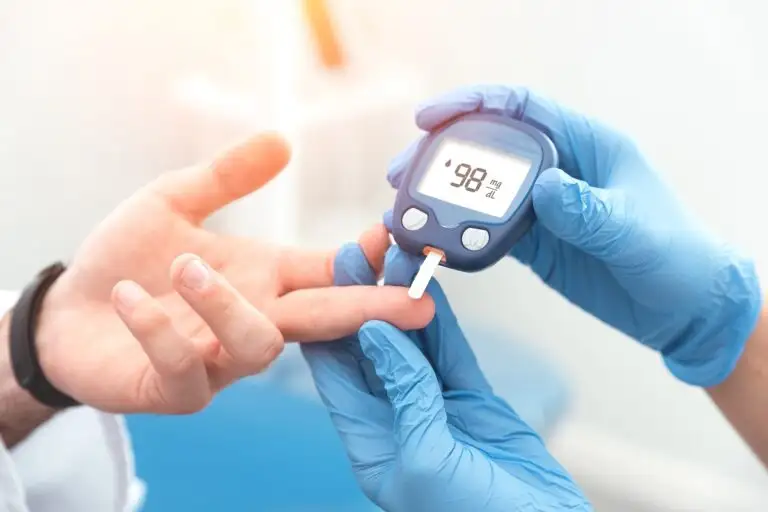
If you have diabetes, it is very important to keep your blood glucose levels under control to avoid complications. Over time, elevated levels of blood glucose levels can cause damage to many major organs, including the heart, blood vessels, nerves, eyes, and kidneys, increasing the risk of other serious health conditions. Here, Dr. Gulshan Rohra, Consultant Cardiac Surgeon, Wockhardt Hospital, Mumbai Central, sheds light on the major complications of diabetes and how these can prevent or delay. He also elaborates on how diabetes increases the risk of heart disease. Read on: Understand Diabetes Diabetes: high blood sugar due to insulin issues. Pancreas secretes insulin to process glucose. There Are 3 Most Common Types of Diabetes: Type 1 Diabetes (Juvenile Diabetes): Has no cure. Almost always requires regular insulin. Type 2 Diabetes: This may happen to adults or children. Usually seen in obese individuals. Depending on sugar levels, it could be managed with just dietary changes Medications, or both. Gestational Diabetes: Diabetes during Pregnancy can affect both mother and the fetus. It can lead to developmental defects, early delivery, heavy baby, and baby with diabetes. Pre-diabetes is when blood sugars are high but not high enough to be called diabetes. It is a risk factor for type 2 diabetes and other related complications. Diabetes and Heart Health: Know the Connection High Glucose in diabetes can affect the blood vessels and nerves. Over time this involves the heart, eyes, and kidneys. Diabetes doubles or even triples the risk of heart attacks and other major cardiovascular events. Nerve damage and reduced blood flow can lead to retinopathy, kidney failure, ulcers & infection. Hypertension and high cholesterol along with diabetes can make things even worse. Eventually, it increases the chances of Coronary artery disease: Blockage of arteries in the heart with cholesterol deposits and it may cause heart attacks. This is the most common heart problem in the world. Heart Failure: Failure of the heart to pump sufficient blood to the body. Cardiomyopathy: Problems of heart muscles. Today, millions of people across the globe have diabetes and the numbers are increasing rapidly. It could be genetic (family history of diabetes) or it could be because of unhealthy lifestyle choices like unhealthy diet, smoking, and/or alcohol. Very recently, we operated on a young man. He is a 32-yr-old young male, with a history of a sedentary lifestyle and unhealthy food choices, presented with intermittent chest pains on walking uphill. His TMT came back positive for inducible ischemia. On further investigation, he was diagnosed as a Type II diabetic with coronary artery disease on an angiogram. He underwent total arterial bypass surgery and is doing well. Ways to Prevent or Delay Diabetes Complications The first and foremost step to reducing complications is early diagnosis and awareness. Consult an expert and talk about the different ways to reach a diagnosis. There are effective and affordable tests to diagnosing diabetes surgery. Secondly, adopt a healthy lifestyle which includes healthy food, smoking cessation, regular exercise, and weight loss, and following your doctor’s advice regarding prescribed medications. It could be pills or insulin injections. What is best for you, depends on blood sugar levels. Always consult your physician and let them help you guide you about the best therapy for you. Be aware of your target blood sugar levels, what to do if your blood sugar levels get low or high, the side effects of the diabetes medications you are taking, and the interactions of your diabetes medications with the other medications you take. Regularly check your blood glucose levels. Dr. Gulshan RohraConsultant Cardiac SurgeonWockhardt Hospitals To book an appointment call: +918291101001 Source: https://www.thehealthsite.com/diseases-conditions/diabetes/diabetes-and-heart-health-how-high-blood-sugar-affect-your-heart-925969/
Feeling gassy is not always due to food! Read 5 medical causes behind it

If you’re passing a lot of gas these days, something is probably wrong! Read on to learn about the 5 medical causes of gas and how to manage your digestive condition. We feel you! That gassy feeling is not the most comfortable, especially if you feel it all the time. While farting is a common phenomenon, being constantly gassy is not. There can be a variety of reasons behind this discomfort. It could be an unhealthy diet or lack of movement. But there can also be a few medical causes of gas. Let’s learn more about each one of them. Health Shots spoke to Pratik Tibdewal, Consultant Gastroenterologist, Wockhardt Hospitals, Mira Road, Mumbai, who listed down the medical causes or diseases which are responsible for excessive gas. Here are 5 medical causes of gas: 1. Sleep apnea Yes, your sleep can be associated with excessive gas buildup in the system. Dr Tibdewal says, “You will be shocked to know that those with sleep apnea are often times mouth-breathers, and tend to swallow air while snoring. So, if you also have sleep apnea then you will wake up having gas as you have swallowed air the entire night while sleeping.” It will be imperative for you to seek a doctor’s help if you tend to snore heavily and have been diagnosed with sleep apnea. Do not ignore this condition! 2. Colon cancer Not many know that there is an association between colon cancer and flatulence. Those with colon cancer may showcase symptoms such as flatulence, persistent abdominal discomfort such as cramps, gas or pain, and even rectal bleeding. So, be watchful of the symptoms. Do not ignore excessive gas at all. “If it is happening frequently then seek timely intervention, suggests Dr Tibdewal. 3. Irritable bowel syndrome (IBS) IBS can be termed as a group of intestinal symptoms that includes abdominal cramping, diarrhoea, constipation, bloating, and gas. IBS will impact the gut, leading to digestive problems. Hence, one with IBS will often have a gas problem. Remember that it is a chronic condition and you’ll need to manage it in the long term. 4. Diverticulosis Diverticular disease symptoms can include bloating, diarrhoea, stomach pain and constipation. Abdominal discomfort, which is typically severe and frequently accompanied by gas, is one of the most common symptoms of diverticulitis. The exact cause of these conditions is unknown according to the experts. 5. Hypothyroidism Digestive problems can sometimes be a result of thyroid dysfunction. The passage of food through your stomach and intestines is slowed down in the case of hypothyroidism. Dr Tibdewal, “Slow digestion can lead to symptoms like heartburn, constipation, bloating, and gas.” Additionally, you might experience frequent bowel movements or even diarrhoea. Here are 5 tips to deal with gastric issues: 1. Exercise daily: Do abdominal muscle-strengthening exercises to keep the digestive tract moving. Try to exercise for at least 30 minutes a day. 2. Avoid dairy products: Do not eat milk, cheese, or other dairy products if you have lactose intolerance as it can cause gas. 3. Do not eat cruciferous vegetables: It is the need of the hour to give up on cabbage, cauliflower, and broccoli to avoid getting gas issues. 4. Say NO to carbonated beverages: Carbonated beverages can lead to gas. 5. Add fibre: Eat an adequate amount of fibre on a daily basis as it can prevent indigestion and gas. Dr Pratik TibdewalConsultant GastroenterologistWockhardt Hospitals, Mira Road To book an appointment call: +918108101104 Source: https://www.healthshots.com/preventive-care/self-care/5-medical-causes-of-gas-and-way-to-get-rid-of-it/
How dangerous is it to ignore borderline sugar that is prediabetes?

People with prediabetes have higher blood sugar than normal, but not high enough yet for a diabetes treatment. Borderline diabetes (prediabetes) is the stage when the person gets type 2 diabetes. It happens due to impaired fasting glucose or glucose even intolerance. It means the blood sugar levels are not in the recommended range but not that high to term it diabetes. Ignoring it is a strict no-no as there are many complications related to it. In the below article, we tell you about the causes, signs, and dangers of borderline sugar. Prediabetes is a serious health condition. People with prediabetes have higher blood sugar than normal, but not high enough yet for a diabetes treatment. The fasting blood sugar level of 100-125ml/dl indicates that one is prediabetic. More than 126/dl or higher indicates you are pre-diabetic. HbA1C levels of 5.7-6.4 indicate prediabetes and a level of more than 6.5 indicates diabetes. The risk factors of prediabetes are obesity, being 45 years or older, lack of physical activity, having a parent, brother, or sister with type 2 diabetes, unhealthy diet: diets high in sugar and processed foods not only raise your blood pressure and bad cholesterol (LDL) and smoking puts you at risk of prediabetes. The causes: Insulin is a hormone made by the pancreas to convert glucose into fuel. When one eats a meal, the carbohydrates present in the food get converted into glucose, otherwise known as blood sugar. That glucose stays in your bloodstream until your pancreas releases insulin. The insulin acts like a key that opens your cells to allow the glucose to enter, where it’s then used to fuel your body. During type 2 diabetes, the pancreas can still produce insulin, but insulin becomes less effective and the cells fail to absorb glucose. Thus, the body becomes resistant to insulin during the prediabetes stage. Symptoms of prediabetes are increased thirst, increased hunger, fatigue, unexplained weight loss, even if eating more and frequent urination, a dark patch on the neck, armpit, groin, or elsewhere could mean that you have too much insulin in your blood, thickening skin on the fingers, toes, sudden blisters. How to diagnose prediabetes? It can be detected via blood glucose tests and HBA1C tests. Complications seen due to prediabetes: One can suffer from a stroke, eye damage, skin infections, hypertension, neuropathy, sleep apnea, and kidney damage owing to prediabetes. This is how you can manage prediabetes: Avoid foods that are WHITE like polished rice and sugar. Go Green (include vegetables and fruits in the diet). Eat fresh fruits, vegetables, whole grains, pulses, and lentils. Try to chew the food thoroughly, and eat in small quantities. Cut down on alcohol, smoking, junk, spicy, oily, and canned food. Opt for non-starchy vegetables such as leafy green vegetables, onions, broccoli, cabbage, cauliflower, bell peppers, mushrooms, and cucumbers. Exercise daily without fail for at least half an hour, play a sport of your choice, stay stress-free, maintain optimum weight and lead a healthy life. Choose boiled and grilled food instead of fried foods. Limit the intake of sweets, desserts, and colas. Dr. Sudarshana PatilConsultant Physician Intensivist & DiabetologistWockhardt Hospitals, Nashik To book an appointment call: +918669998260 Source: https://www.financialexpress.com/lifestyle/health/how-dangerous-is-it-to-ignore-borderline-sugar-that-is-prediabetes/2811083/












